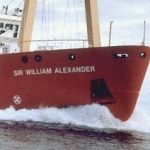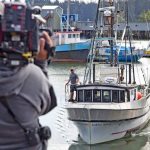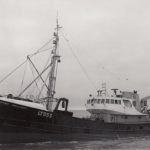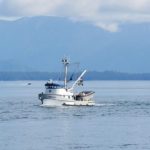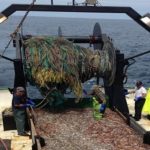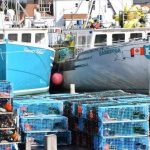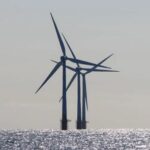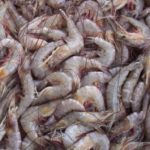Tag Archives: Laine Welch
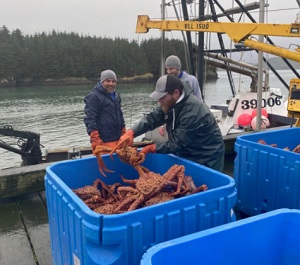
Has fish business become media fish politics?
While it is somewhat unusual for an Alaska mayor to write an opinion piece, I have been consistent in sharing my views on fisheries, Cordova’s single largest economic driver. I’m always striving to represent the opinions and needs of my community, even in rare cases where they may diverge somewhat from my own.,, What I have not shared is my deep concerns over the existential threats to our oceans and way of life, but perhaps a few reminders are in order this week, and my opinions regarding these are my own based upon my observations. While Alaska is famous for fish politics, I have trusted Laine Welch,, Laine’s column does a disservice to her readership,,, Respectfully, Clay Koplin, Citizen, Cordova >click to read< 12:02

Coronavirus: Letter from 200+ US seafood industry stakeholders to Trump Administration
March 24, 2020, Dear President Trump. We write as participants in America’s seafood supply chain, a critical component of the country’s domestic food infrastructure and one of the major economic drivers in our country’s coastal communities and states. Empty restaurants, cafes, and dining halls are a visible reminder of the ongoing, unprecedented public health efforts to blunt the spread of COVID-19. The livelihoods of the chefs, cooks, servers, and other staff are obvious and direct casualties of those government efforts. The economic disruption caused by forced restaurant closures and active encouragement for Americans to “shelter in place,” however, extend far beyond the food service sector. >click to read< 19:37
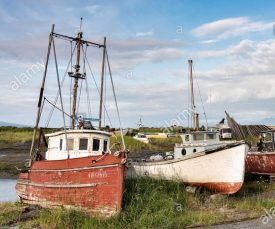
Derelict Vessels Act – Derelict vessel law sets up ‘DMV gantlet’ for thousands of Alaska mariners
A well-intended new Alaska law has gone awry from a botched roll out that has turned thousands of Alaskan fishing vessel, tender, barge and sport fish operators into lawbreakers. Since the start of 2019, all vessels over 24 feet are required to be registered with the State at a Department of Motor Vehicles office. Previously, vessels that were documented with the US Coast Guard were not also required to register with the state. The registration costs $24 and is good for three years. “You need to get down to the DMV whether you’re documented or not,” >click to read<09:39
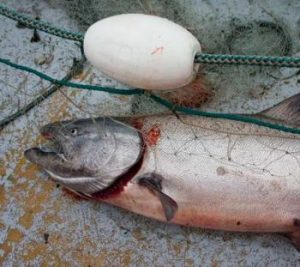
FISH FACTOR: Salmon permit values rise on optimism; halibut shares sinking
Nearly all Alaska salmon permits have gone up in value since last fall and buying/selling/trading action is brisk. “We’re as busy as we’ve ever been in the last 20 years,” said Doug Bowen of Alaska Boats and Permits in Homer. “Boat sales are doing well and between IFQs (individual fishing quota) and permit sales, we’ve got a busy year going.”The salmon permit interest is fueled by a forecast this year of more than 213 million fish, an 85 percent increase over 2018. Also, salmon prices are expected to be higher.,,, Halibut quota slump,,, >click to read<13:01

Catch Shares – Costs rise while values fall; season starts uncertain during shutdown
Fishermen in Alaska who own catch shares of halibut, sablefish and Bering Sea crab will pay more to the federal government to cover 2018 management and enforcement costs for those fisheries. ,, “The value of the halibut fishery was down 24 percent year over year, while sablefish was down 21 percent,” Greene said, adding that the decreases stemmed primarily from lower dock prices. ,,, Fish shutdown shaft-Hundreds of boats that are gearing up for the January start of some of Alaska’s largest fisheries could be stuck at the docks due to the government shutdown battle between President Donald Trump and Senate Democrats. >click to read<14:40

One king salmon worth more than a barrel of oil to AK fishermen; Updates for 2018/19
Salmon stakeholders are still crunching the numbers from the 2018 season, which up front has two distinctions: it ranks as one of the most valuable on record to fishermen at nearly $596 million, and at just over 114 million salmon, it’s one of the smallest harvests in 34 years. A breakdown by the McDowell Group shows the sockeye harvest was the second most valuable in 26 years; the chum catch was the third most valuable since 1975. Audio report, >click to read<17:06

Simple fix for winch injuries not being used by seiners; Experts want to find out why
The most common gear on a seine boat is one of the most deadly – the rotating capstan winch used for winding ropes. Here’s a sampler “The deck winch is the most powerful thing on the boat. It’s the scariest piece of machinery that we work with.” “The corner of my raincoat caught under the capstan and started wrapping around. It snapped my head back and broke my neck.”,,, A simple E-Stop device has been available for over 10 years to prevent winch injuries. >click to read< 17:23
Record high prices, strong demand for Canadian snow crab bodes well for Alaska
 The top executives of Royal Greenland and Ocean Choice International (OCI) noted demand has remained strong for Canadian snow crab in 2017, despite record-high prices caused by reduced supply from the Newfoundland and Labrador fishery. In April, Canada’s Department of Fisheries and Oceans (DFO) cut the 2017/2018 total allowable catch (TAC) for the Newfoundland and Labrador fishery 22% year-on-year — to 35,419 metric tons — causing prices to increase to record levels of over $8 per pound (for 5-8 ounce size crab) during the season, sources said. The Newfoundland season started on April 6 and finished between May and August, depending on the area. click here to read the story 18:38
The top executives of Royal Greenland and Ocean Choice International (OCI) noted demand has remained strong for Canadian snow crab in 2017, despite record-high prices caused by reduced supply from the Newfoundland and Labrador fishery. In April, Canada’s Department of Fisheries and Oceans (DFO) cut the 2017/2018 total allowable catch (TAC) for the Newfoundland and Labrador fishery 22% year-on-year — to 35,419 metric tons — causing prices to increase to record levels of over $8 per pound (for 5-8 ounce size crab) during the season, sources said. The Newfoundland season started on April 6 and finished between May and August, depending on the area. click here to read the story 18:38
AK seafood earnings, poundage outpaced by Washington state
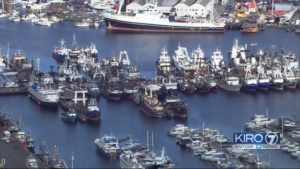 Alaska’s seafood industry puts more people to work than any other private industry, topping 60,000 workers in 2015. Of that, less than half – 27,600 – were Alaska residents. And while 71 percent of active fishing permit holders call Alaska home, most of the gross earnings go to the state of Washington. Based on numbers from the United Fishermen of Alaska’s annual Fish Facts, resident fishing permit holders made gross dockside earnings of just over $602 million two years ago. That compares to more than $904 million by nearly 6,580 Washington-based permit holders and crew. Fishermen from Oregon took home more than $126 million from Alaska’s fisheries and Californians pocketed nearly $28 million. That adds up to more than $1 Billion flowing out of state by non-resident fishermen. Listen to the audio report, read the rest here 17:29
Alaska’s seafood industry puts more people to work than any other private industry, topping 60,000 workers in 2015. Of that, less than half – 27,600 – were Alaska residents. And while 71 percent of active fishing permit holders call Alaska home, most of the gross earnings go to the state of Washington. Based on numbers from the United Fishermen of Alaska’s annual Fish Facts, resident fishing permit holders made gross dockside earnings of just over $602 million two years ago. That compares to more than $904 million by nearly 6,580 Washington-based permit holders and crew. Fishermen from Oregon took home more than $126 million from Alaska’s fisheries and Californians pocketed nearly $28 million. That adds up to more than $1 Billion flowing out of state by non-resident fishermen. Listen to the audio report, read the rest here 17:29

Alaska commercial fishing picks and pans for 2016
The start of 2017 marks the 26th year for this weekly column on Alaska’s seafood industry that aims to make readers aware of the economic and cultural importance of our state’s oldest industry. Alaska fishermen and processors provide 65 percent of our nation’s wild-caught seafood; it is also Alaska’s most valuable export to more than 100 countries around the world. The bulk of Alaska’s fishing fleet of nearly 10,000 vessels is made up of boats less than 50 feet long. Each is a small business that supports several families. For fishing towns like Kodiak, Cordova and Homer, where 500 to 700 vessels are home-ported, those boats are essentially the majority of our downtown store fronts. Call it a mall in a marina. Here are my fishing picks and pans for 2016 — a look back at the best and worst fish stories of 2016, in no order, plus my choice for the biggest story of the year. Laine Welch Read the story here 08:51
Bristol Bay total salmon catch #1 in 20 years, Value tops $156m
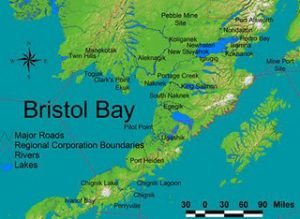 From Alaska Dept. of Fish and Game September 9, 2016 The following is an overview of the 2016 Bristol Bay commercial salmon season. All data are preliminary. The 2016 inshore Bristol Bay sockeye salmon run of 51.4 million fish ranks 2nd out of the last 20 years and was 46% above the 35.1 million average run for the same period. This year’s Bristol Bay sockeye salmon run was 10% above the preseason inshore forecast of 46.6 million fish. The Egegik,Nushagak, Togiak and Ugashik districts were higher than the preseason forecast while Naknek-Kvichak district was less than predicted. Read the rest here 19:04
From Alaska Dept. of Fish and Game September 9, 2016 The following is an overview of the 2016 Bristol Bay commercial salmon season. All data are preliminary. The 2016 inshore Bristol Bay sockeye salmon run of 51.4 million fish ranks 2nd out of the last 20 years and was 46% above the 35.1 million average run for the same period. This year’s Bristol Bay sockeye salmon run was 10% above the preseason inshore forecast of 46.6 million fish. The Egegik,Nushagak, Togiak and Ugashik districts were higher than the preseason forecast while Naknek-Kvichak district was less than predicted. Read the rest here 19:04
Alaska Pink Salmon Fishery Set To Rank as Worst in 20 Years
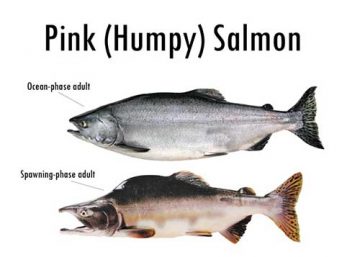 Alaska’s 2016 pink salmon fishery is set to rank as the worst in 20 years by a long shot, and the outlook is bleak for all other salmon catches except sockeyes. “Boy, sockeye is really going to have to carry the load in terms of the fishery’s value because there’s a lot of misses elsewhere,” said Andy Wink, a fisheries economist with the Juneau-based McDowell Group. The historical peaks of the various salmon runs have already passed and the pink salmon catch so far has yet to break 35 million on a forecast of 90 million. That compares to a harvest of 190 million pinks last year. Weekly tracking through August 15 shows the pace of the Chinook salmon harvest (341,000) is down 42 percent versus last year in net fisheries, cohos (under 2 million) are down 20 percent, and the chum catch (12 million) is down 25 percent. Read the article here 14:42
Alaska’s 2016 pink salmon fishery is set to rank as the worst in 20 years by a long shot, and the outlook is bleak for all other salmon catches except sockeyes. “Boy, sockeye is really going to have to carry the load in terms of the fishery’s value because there’s a lot of misses elsewhere,” said Andy Wink, a fisheries economist with the Juneau-based McDowell Group. The historical peaks of the various salmon runs have already passed and the pink salmon catch so far has yet to break 35 million on a forecast of 90 million. That compares to a harvest of 190 million pinks last year. Weekly tracking through August 15 shows the pace of the Chinook salmon harvest (341,000) is down 42 percent versus last year in net fisheries, cohos (under 2 million) are down 20 percent, and the chum catch (12 million) is down 25 percent. Read the article here 14:42
F/V Northern Leader to be profiled on Discovery’s “Mighty Ships” Series
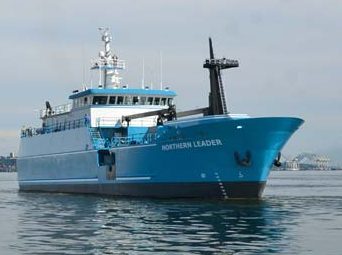 Demonstrating enviable efficiency, F/V Northern Leader of Kodiak will take a star turn on the popular “Mighty Ships” cable TV program. “Mighty Ships” producers search for unique ships around the world. Its seven-year run has featured a range of vessels including cruise ships, aircraft carriers, cargo ships, dredgers and more. The programs focus on the operational capabilities and technical aspects of the ships while making use of computer-generated animation to show underwater operations. What attracted them to the 184-foot freezer-longliner Northern Leader is its joystick-controlled, eco-friendly propulsion system that runs on electricity — the first U.S. fishing vessel to do so — and its head-to-tail use of the fish it catches. The 3-year-old Northern Leader fishes primarily for Bering Sea cod. Says Discovery: “Catching fish with hooks, not nets, she sends out 80 kilometers of fishing line containing 76,000 hooks. In the heart of the Bering Sea, her crew battles a hurricane with 13-meter-high waves and winds of more than 100 kilometers per hour.” Read the rest here 13:54
Demonstrating enviable efficiency, F/V Northern Leader of Kodiak will take a star turn on the popular “Mighty Ships” cable TV program. “Mighty Ships” producers search for unique ships around the world. Its seven-year run has featured a range of vessels including cruise ships, aircraft carriers, cargo ships, dredgers and more. The programs focus on the operational capabilities and technical aspects of the ships while making use of computer-generated animation to show underwater operations. What attracted them to the 184-foot freezer-longliner Northern Leader is its joystick-controlled, eco-friendly propulsion system that runs on electricity — the first U.S. fishing vessel to do so — and its head-to-tail use of the fish it catches. The 3-year-old Northern Leader fishes primarily for Bering Sea cod. Says Discovery: “Catching fish with hooks, not nets, she sends out 80 kilometers of fishing line containing 76,000 hooks. In the heart of the Bering Sea, her crew battles a hurricane with 13-meter-high waves and winds of more than 100 kilometers per hour.” Read the rest here 13:54
Alaska salmon prices seem to be rebounding – Chilean farmed salmon takes a hit
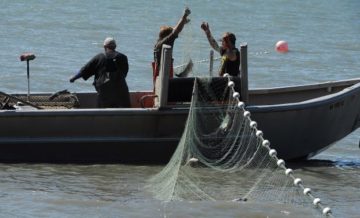 Alaska’s salmon season has started with optimism, a far cry from the bleak feelings a year ago when the fishery was blown asunder by a perfect storm of depressed currencies, salmon backlogs and global markets awash with farmed fish. Prices to fishermen fell nearly 41 percent between 2013 and 2015, years which produced the two largest Alaska salmon harvests on record. But in the past six months, those trends have turned around. Another positive turnaround involves salmon supplies. “If you want to see what’s happening with fish prices, look at supply and demand. Look at how much was produced in Alaska and how much our competitors produced,” advised fisheries economist Gunnar Knapp,,, Read the rest here 09:08
Alaska’s salmon season has started with optimism, a far cry from the bleak feelings a year ago when the fishery was blown asunder by a perfect storm of depressed currencies, salmon backlogs and global markets awash with farmed fish. Prices to fishermen fell nearly 41 percent between 2013 and 2015, years which produced the two largest Alaska salmon harvests on record. But in the past six months, those trends have turned around. Another positive turnaround involves salmon supplies. “If you want to see what’s happening with fish prices, look at supply and demand. Look at how much was produced in Alaska and how much our competitors produced,” advised fisheries economist Gunnar Knapp,,, Read the rest here 09:08
McDowell Group Report outlines economics of Kodiak Island’s seafood industry. Jobs=38%
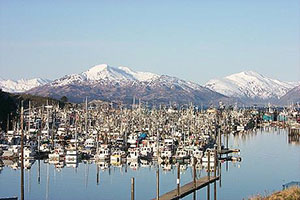 Kodiak is grappling with how new ways of managing groundfish might affect the island’s economy. Plans being crafted now affect catches of up to 25 different fish species – which together made up 83 percent of all Kodiak landings in 2014. To provide some guidance, a new economic impact report breaks down how the entire seafood industry plays out throughout the Kodiak Island borough, which includes six outlying villages for a total population of 14,000 residents. The draft report done by the McDowell Group gives a 10 year snapshot starting in 2005, covering all the local actions it takes to be a seafood powerhouse year after year. Nearly 500 million pounds of seafood worth $150 million to fishermen was delivered to Kodiak Island in 2014. Read the rest here 18:08
Kodiak is grappling with how new ways of managing groundfish might affect the island’s economy. Plans being crafted now affect catches of up to 25 different fish species – which together made up 83 percent of all Kodiak landings in 2014. To provide some guidance, a new economic impact report breaks down how the entire seafood industry plays out throughout the Kodiak Island borough, which includes six outlying villages for a total population of 14,000 residents. The draft report done by the McDowell Group gives a 10 year snapshot starting in 2005, covering all the local actions it takes to be a seafood powerhouse year after year. Nearly 500 million pounds of seafood worth $150 million to fishermen was delivered to Kodiak Island in 2014. Read the rest here 18:08
Salmon markets face lower supplies
 A downward shift in supplies of salmon could boost demand for Alaska fish. If that basic rule holds true, prices could move out of the basement. Some balance appears to be in the offing. Alaska’s projected salmon harvest of 161 million fish is down 40 percent from last season due to an off year for pinks. Bristol Bay’s sockeye forecast of just under 30 million is well below harvests of the past two years. That helps remove backlogs of reds, which are moving briskly through markets. A prime example: Sockeye exports to Japan, which is enduring local fishery failures, surged 320 percent at the end of last year and demand is expected to remain strong. Audio report, Read the rest here 17:51
A downward shift in supplies of salmon could boost demand for Alaska fish. If that basic rule holds true, prices could move out of the basement. Some balance appears to be in the offing. Alaska’s projected salmon harvest of 161 million fish is down 40 percent from last season due to an off year for pinks. Bristol Bay’s sockeye forecast of just under 30 million is well below harvests of the past two years. That helps remove backlogs of reds, which are moving briskly through markets. A prime example: Sockeye exports to Japan, which is enduring local fishery failures, surged 320 percent at the end of last year and demand is expected to remain strong. Audio report, Read the rest here 17:51
Bering Sea crab prices increase big across the board
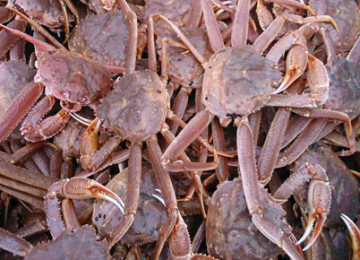 Only a handful of boats are still out hauling crab pots from the Bering Sea and they can be sure of a good price for their catch. It’s just been a really good year for crab all around. Jake Jacobsen is a four decade fishing veteran and director of the Inter-Cooperative Exchange, a harvester group that catches 70 percent of the Bering Sea crab quota. Right now the boats are finishing off the Tanner and snow crab shares. We haven’t even started the final prices for snow crab yet. We started out with an advance of $2.00 a pound but that really doesn’t mean anything. The advance price is just a number we throw out there so the fishermen have some money to pay their expenses as they go along. Audio, Read the rest here 18:35
Only a handful of boats are still out hauling crab pots from the Bering Sea and they can be sure of a good price for their catch. It’s just been a really good year for crab all around. Jake Jacobsen is a four decade fishing veteran and director of the Inter-Cooperative Exchange, a harvester group that catches 70 percent of the Bering Sea crab quota. Right now the boats are finishing off the Tanner and snow crab shares. We haven’t even started the final prices for snow crab yet. We started out with an advance of $2.00 a pound but that really doesn’t mean anything. The advance price is just a number we throw out there so the fishermen have some money to pay their expenses as they go along. Audio, Read the rest here 18:35
Salmon permit prices plunge while halibut soars
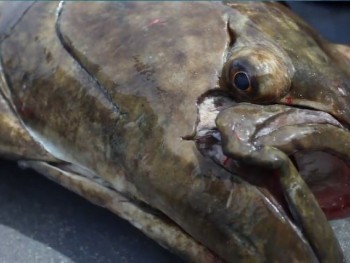 Fire sale salmon prices last year and a dim outlook for the upcoming season have caused the value of Alaska fishing permits to plummet. At the other extreme, the prices for halibut catch shares have soared to “unheard-of levels,” according to Olivia Olsen of Alaskan Quota and Permits at Petersburg. This year’s small increase in the halibut quota combined with hopes of a repeat of $6 to $7 per pound prices was enough to send quota share prices skyrocketing. “There was a big rush after the halibut numbers were announced in late January,” said Olsen of Petersburg. Read the rest here 10:32
Fire sale salmon prices last year and a dim outlook for the upcoming season have caused the value of Alaska fishing permits to plummet. At the other extreme, the prices for halibut catch shares have soared to “unheard-of levels,” according to Olivia Olsen of Alaskan Quota and Permits at Petersburg. This year’s small increase in the halibut quota combined with hopes of a repeat of $6 to $7 per pound prices was enough to send quota share prices skyrocketing. “There was a big rush after the halibut numbers were announced in late January,” said Olsen of Petersburg. Read the rest here 10:32
Don’t expect price jump for Alaska red salmon this year
Early signs point to continuing headwinds in world markets for Alaska salmon. Let’s count the troubling signs: • Global currencies remain in disarray • The ongoing Russian seafood embargo diverts more farmed salmon to the U.S. • Tons of product remains in freezers from back-to-back bumper sockeye runs. (Most of Alaska’s salmon goes to market frozen or headed and gutted. One plus: Aggressive market promotions have kept reds moving briskly at retail outlets at home and abroad, removing some of the backlog. Read the rest here 16:12
Alaskans own dwindling number of Alaska fishing permits
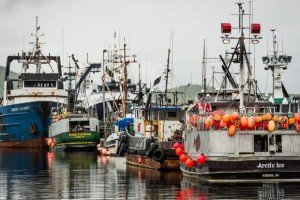 Fishing issues will take a back seat to budget cutting when the Alaska Legislature convenes Jan. 19, but two early fish bills (and one holdover) are getting attention already. One new measure aims to stop the migration of commercial fishing permits out of Alaska. Forty years ago at Bristol Bay, 36 percent of the more than nearly 2,000 permits were held by locals and 64 percent by nonresidents. By 2013, the numbers were 19 percent local and 81 percent nonresident. Similar trends, by varying degrees, are happening in other regions as well. Read the article here 12:33
Fishing issues will take a back seat to budget cutting when the Alaska Legislature convenes Jan. 19, but two early fish bills (and one holdover) are getting attention already. One new measure aims to stop the migration of commercial fishing permits out of Alaska. Forty years ago at Bristol Bay, 36 percent of the more than nearly 2,000 permits were held by locals and 64 percent by nonresidents. By 2013, the numbers were 19 percent local and 81 percent nonresident. Similar trends, by varying degrees, are happening in other regions as well. Read the article here 12:33
Groundfish boosts Alaska fishing jobs, 84% of total fish poundage
 Alaska’s seafood industry puts more people to work than oil and gas, mining, tourism and logging combined. And the numbers continue to grow, thanks to increased catches of groundfish, primarily pollock and cod. According to the November issue of by the state Department of Labor, fishing employment grew by 0.7 percent last year, boosted by 350 jobs in groundfish harvesting – a nearly 25 percent increase. Gains were made in every month of the year, with employment records set in March and December. Read the rest here 16:08
Alaska’s seafood industry puts more people to work than oil and gas, mining, tourism and logging combined. And the numbers continue to grow, thanks to increased catches of groundfish, primarily pollock and cod. According to the November issue of by the state Department of Labor, fishing employment grew by 0.7 percent last year, boosted by 350 jobs in groundfish harvesting – a nearly 25 percent increase. Gains were made in every month of the year, with employment records set in March and December. Read the rest here 16:08
Trawlers may convert to pot gear for cod catches
 One of the tools being talked about to help trawlers reduce salmon and halibut bycatch is the opportunity to voluntarily convert to pot gear to catch Pacific cod. It’s an option being discussed by fishery managers as they craft a trawl bycatch reduction plan for the Gulf of Alaska. Sam Cunningham, “The reason someone might be interested in using pot gear, and the reason is that it would have lower bycatch of prohibited species of Chinook salmon and halibut, and when those species are caught incidentally they would be less likely to die because they are caught in pot gear.” Listen, and read the rest here 17:51
One of the tools being talked about to help trawlers reduce salmon and halibut bycatch is the opportunity to voluntarily convert to pot gear to catch Pacific cod. It’s an option being discussed by fishery managers as they craft a trawl bycatch reduction plan for the Gulf of Alaska. Sam Cunningham, “The reason someone might be interested in using pot gear, and the reason is that it would have lower bycatch of prohibited species of Chinook salmon and halibut, and when those species are caught incidentally they would be less likely to die because they are caught in pot gear.” Listen, and read the rest here 17:51
Alaska 2015 salmon values = $414 million; PWS tops all regions
 The Alaska Department of Fish and Game (ADF&G) has compiled preliminary figures for the 2015 commercial salmon harvest and harvest value. The total 2015 statewide commercial salmon harvest was 263.5 million fish, and was comprised of 474,000 Chinook salmon, 15.2 million chum salmon, 3.6 million coho salmon, 190.5 million pink salmon, and 54 million sockeye salmon. Overall, this represents the second largest salmon harvest on record, and was exceeded only by the record harvests of 2013. Read the rest here 15:32
The Alaska Department of Fish and Game (ADF&G) has compiled preliminary figures for the 2015 commercial salmon harvest and harvest value. The total 2015 statewide commercial salmon harvest was 263.5 million fish, and was comprised of 474,000 Chinook salmon, 15.2 million chum salmon, 3.6 million coho salmon, 190.5 million pink salmon, and 54 million sockeye salmon. Overall, this represents the second largest salmon harvest on record, and was exceeded only by the record harvests of 2013. Read the rest here 15:32
Alaska salmon permit values nosedive after the fishing season
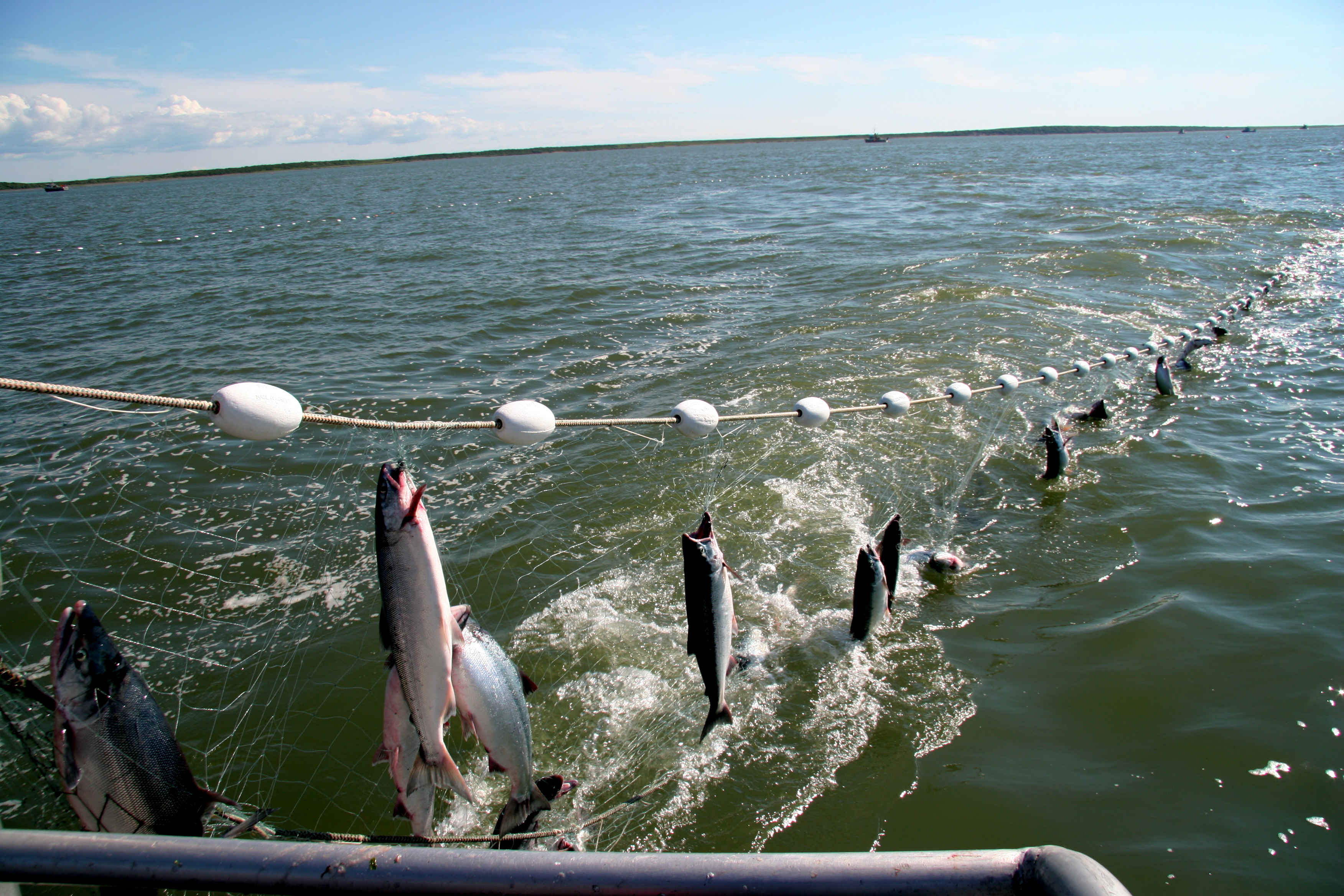 The value of Alaska salmon permits has taken a nosedive directly after the fishing season. The permit market is really unsettled right now after the season we just had. There were a few bright spots out there, but fisheries in a few areas of the state that did not do well, either because of production or price or both. So the dust really hasn’t settled here since the season ended. Doug Bowen runs Alaska Boats and Permits in Homer. permits have taken the biggest hit after another huge sockeye run ran into a perfect storm of global currency chaos amid a glut of wild and farmed salmon on the market. Bay fishermen got a dismal price of just 50 cents a pound for their reds. Listen, Read the rest here 16:12:06
The value of Alaska salmon permits has taken a nosedive directly after the fishing season. The permit market is really unsettled right now after the season we just had. There were a few bright spots out there, but fisheries in a few areas of the state that did not do well, either because of production or price or both. So the dust really hasn’t settled here since the season ended. Doug Bowen runs Alaska Boats and Permits in Homer. permits have taken the biggest hit after another huge sockeye run ran into a perfect storm of global currency chaos amid a glut of wild and farmed salmon on the market. Bay fishermen got a dismal price of just 50 cents a pound for their reds. Listen, Read the rest here 16:12:06
Meetings will shape AK fishing futures: salmon vs coal, setnet ban, NPFMC, BOF, IPHC
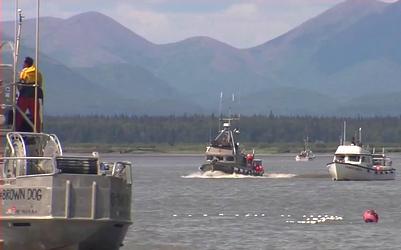 It’s a meeting line up like never before for Alaska’s fishing industry. Starting off this Friday – the state Department of Natural Resources will hear both sides on competing claims to water rights for salmon streams at Upper Cook Inlet’s Chuitna River or to dewater the region for what would be Alaska’s biggest coal mine. The decision could set a state precedent. A decision is expected on or before October 9.Next Wednesday, August 26, is the state Supreme Court hearing on the setnet ban proposed for Cook Inlet and five other Alaska regions. Read the rest here 18:03
It’s a meeting line up like never before for Alaska’s fishing industry. Starting off this Friday – the state Department of Natural Resources will hear both sides on competing claims to water rights for salmon streams at Upper Cook Inlet’s Chuitna River or to dewater the region for what would be Alaska’s biggest coal mine. The decision could set a state precedent. A decision is expected on or before October 9.Next Wednesday, August 26, is the state Supreme Court hearing on the setnet ban proposed for Cook Inlet and five other Alaska regions. Read the rest here 18:03
Bristol Bay fishermen aghast at 50-cents-a-pound price for sockeye
 Most Bristol Bay fishermen were shocked and dismayed when they heard last week that major buyers would pay 50 cents a pound for . That’s a throwback to the dock prices paid from 2002 to 2004, and is far below the $1.20 or more paid last year. A late surge of reds produced catches of nearly 13 million fish in the final week of this year’s run, bringing the total by July 23 to 34.5 million fish. Fish were still trickling in, and state managers, who called the season an anomaly, said the final tally should reach the projected harvest of 37.6 million sockeye. Read the rest here 15:35
Most Bristol Bay fishermen were shocked and dismayed when they heard last week that major buyers would pay 50 cents a pound for . That’s a throwback to the dock prices paid from 2002 to 2004, and is far below the $1.20 or more paid last year. A late surge of reds produced catches of nearly 13 million fish in the final week of this year’s run, bringing the total by July 23 to 34.5 million fish. Fish were still trickling in, and state managers, who called the season an anomaly, said the final tally should reach the projected harvest of 37.6 million sockeye. Read the rest here 15:35
Comments wanted as GOA trawl bycatch reduction program is crafted
 Crafting a program to reduce trawl bycatch in Gulf groundfish fisheries has been underway for three years. In October the North Pacific Council will begin piecing the new program together in a process that could take several years. The new program will include some form of catch shares (because it’s easy for regulators!) If a member of the public is worried about bycatch management but they don’t think catch shares are a viable alternative, we’d really appreciate hearing other ideas. (Because they can’t figure out any other way!!!) Listen, Read the rest here 17:47
Crafting a program to reduce trawl bycatch in Gulf groundfish fisheries has been underway for three years. In October the North Pacific Council will begin piecing the new program together in a process that could take several years. The new program will include some form of catch shares (because it’s easy for regulators!) If a member of the public is worried about bycatch management but they don’t think catch shares are a viable alternative, we’d really appreciate hearing other ideas. (Because they can’t figure out any other way!!!) Listen, Read the rest here 17:47
Setnet numbers, bycatch rates refute sport claims
Salmon setnets are not outdated forms of fishing gear that indiscriminately kill everything in their paths. That’s the main talking point of sport fish advocates aiming to ban setnets in six regions of Alaska. “I believe now more than ever that Alaskans want to end the devastating and outdated mode of commercial fishing called setnetting. I spent six years as a setnetter in Upper Cook Inlet and during that time I caught a lot of red salmon. However, my nets also caught sharks, birds, ducks, flounders, dolly vardens and a lot of king salmon. Setnets are decimating other species in Alaska.” But the data don’t back up the deadly claims that the gear indiscriminately kills and threatens other species. Listen, Read the rest here
Fish War: What does the future hold for setnets?
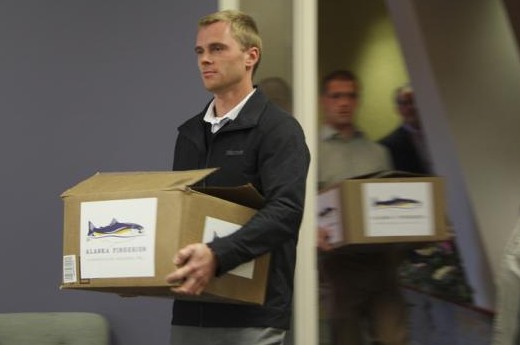 A one handed clap best describes the reaction to the 43,000 signature drop off by anti-salmon setnet advocates at the Division of Elections last week. The ban is being pushed one-handed by the Alaska Fisheries Conservation Alliance (AFCA), whose board of directors delivered stacks of signature booklets, followed by a press conference rife with talking points, table pounding, bravado and buzzwords.,,, “Setnetting in Alaska is very important to these local coastal economies. They are long time, family based operations ,,, Read the rest here 09:43
A one handed clap best describes the reaction to the 43,000 signature drop off by anti-salmon setnet advocates at the Division of Elections last week. The ban is being pushed one-handed by the Alaska Fisheries Conservation Alliance (AFCA), whose board of directors delivered stacks of signature booklets, followed by a press conference rife with talking points, table pounding, bravado and buzzwords.,,, “Setnetting in Alaska is very important to these local coastal economies. They are long time, family based operations ,,, Read the rest here 09:43






 Following the devastating 2011 earthquake and tsunami in Japan, there have been public concerns about potential impacts on Alaska seafood from the Fukushima nuclear disaster. Although modeling and other analyses have not demonstrated a potential risk to Alaska fish, the Alaska Department of Environmental Conservation (DEC) Division of Environmental Health (DEH) has been coordinating with the Department of Health and Social Services (DHSS) Division of Public Health, as well as other state, federal, and international agencies and organizations to address continued public concerns.
Following the devastating 2011 earthquake and tsunami in Japan, there have been public concerns about potential impacts on Alaska seafood from the Fukushima nuclear disaster. Although modeling and other analyses have not demonstrated a potential risk to Alaska fish, the Alaska Department of Environmental Conservation (DEC) Division of Environmental Health (DEH) has been coordinating with the Department of Health and Social Services (DHSS) Division of Public Health, as well as other state, federal, and international agencies and organizations to address continued public concerns. 




























